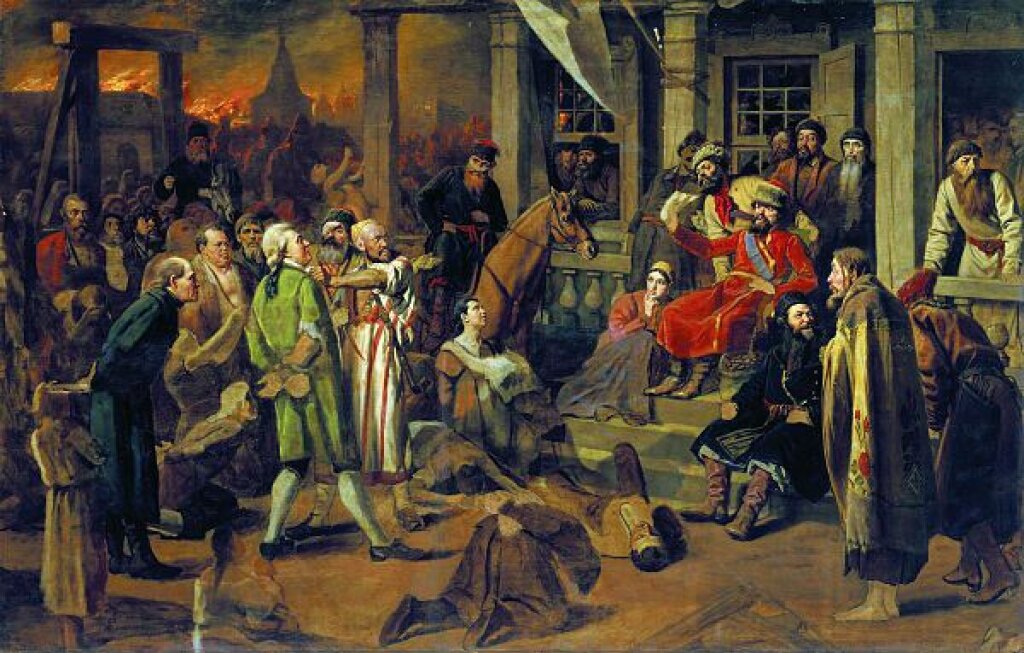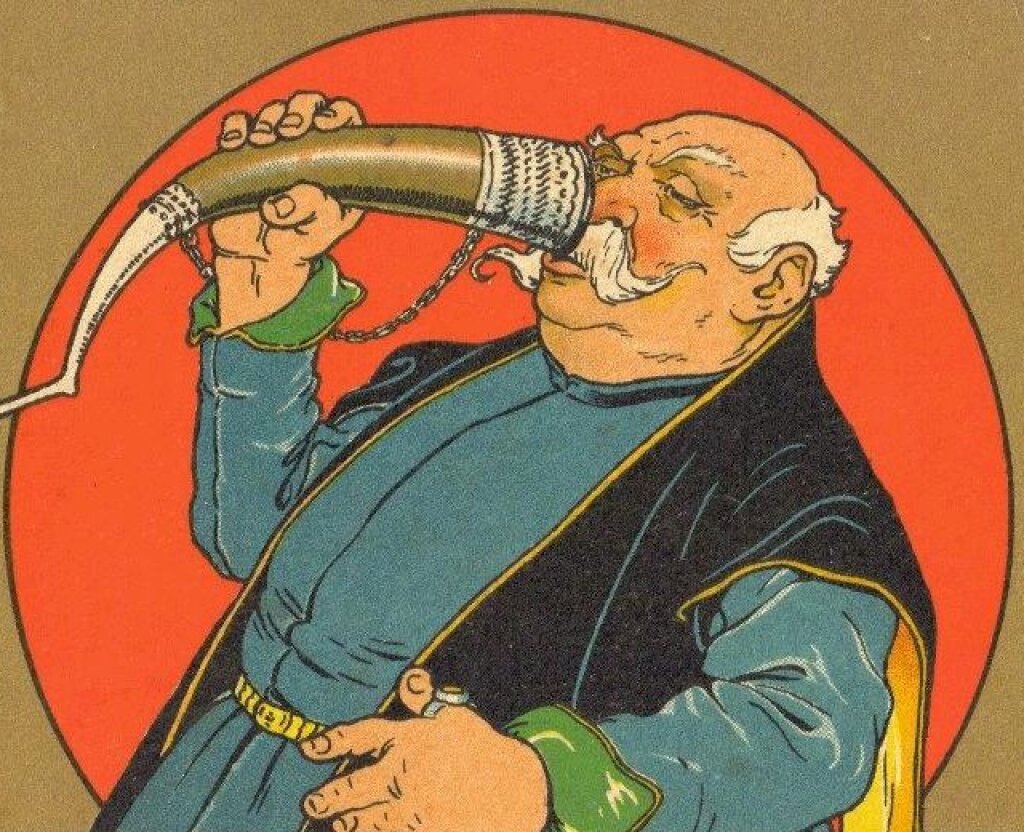Maureen Perrie is Emeritus Professor of Russian History at the Centre for Russian, European and Eurasian Studies, University of Birmingham.
A version of this post appeared in the Spring 2023 issue of Kritika.
The increased persecution of religious minorities in Russia in the reign of Tsar Nicholas I (1825-55) has met with a number of explanations: the generally repressive nature of Nicholas’s autocratic rule; a proto-totalitarian desire to impose ideological conformity; even a fear that foreign powers might take advantage of dissenters in order to subvert the state. In this post, I shall consider a rather more specific reason: the government’s belief that they had uncovered plans by the small sect of Castrates (skoptsy) to organize a large-scale insurrection.
In 1843, the tsar and his senior advisers were greatly alarmed by reports from researchers in the Ministry of Internal Affairs who had been investigating religious minorities. According to these reports, the Castrates believed that Nicholas’s grandfather, Tsar Peter III, who had died in 1762, was in fact still alive and living in eastern Siberia. From there, he would supposedly descend on Moscow with legions of followers and restore himself to power as legitimate tsar.
The Castrates were first recorded in the late eighteenth century as an offshoot of a sect known as the Flagellants (khlysty). Like the Flagellants, they practiced general asceticism and mortification of the flesh, but they took these principles to the extreme of self-castration, justifying the practice by Christ’s words in praise of eunuchs in the Gospel of St Matthew (Matt. 19:12). Like the Flagellants, the Castrates identified their leaders with Christ and his disciples, but they also identified them with tsars and other members of the royal family. Kondratii Selivanov, the founder of the Castrates, called himself both Christ and Tsar Peter III, while his companion, Akulina Ivanova, styled herself both Virgin Mary and Empress Elizabeth.
Selivanov had been confined in a monastery in the town of Suzdal, where he died in 1832. But now the Castrates claimed that he had not died: he had escaped from captivity and fled to Siberia, where he was rallying his supporters for a bid to regain the throne as Peter III.
This was a particularly worrying prospect for the Russian authorities, because of its echoes with the great Pugachev uprising against Catherine II (“the Great”) in 1773-4. Catherine was widely suspected of complicity in the murder of her husband, Peter III, and her legitimacy as his successor was frequently challenged by impostors claiming to be Peter. One of these numerous false Peters was Emelian Pugachev, a Cossack from the Don region, who succeeded in raising a large-scale revolt with the aim of restoring the legitimate tsar to the throne.
Royal impostors (samozvantsy) had been a recurrent phenomenon in Russia since the series of False Dimitriis in the early seventeenth century. By claiming to be the “true tsar” who had escaped death or imprisonment, rebel leaders could oppose rulers whom they believed to be usurpers. In addition to the false Peter IIIs, a number of pretenders assuming a variety of royal identities had appeared throughout the eighteenth century, contesting the authority of reigning monarchs.
Nicholas I was particularly vulnerable to the prospect of pretenders, since his own legitimacy as ruler had been questioned. When Tsar Alexander I died in 1825, it had been assumed that he would be succeeded by his brother, Grand Duke Constantine. Constantine, however, renounced his right to the throne in favor of his younger brother, Nicholas. The resultant dynastic confusion gave rise to various popular rumors. It was suggested that the landowners had blocked Constantine’s succession because he favored the liberation of the serfs. Even after his death in 1831, it was whispered that the Grand Duke was still alive and might return to claim the throne. According to other rumors, Alexander himself had not died, but was wandering the land incognito in the guise of a hermit called Fedor Kuzmich.
Reports about the Castrates now suggested that not only Nicholas’s elder brothers Alexander and Constantine, but also his grandfather, Peter III, were rumored still to be alive—in which case Peter, as the senior member of the dynasty, had the strongest case to be legitimate monarch. The Castrates’ views about Peter III, Nicholas’s advisers warned him, could lead to a new Pugachev-style uprising. This possibility was particularly worrying in the 1840s, when voices were being raised in favor of emancipation. Pugachev had gained popular support by promising freedom to the peasants, and there was now a danger that a new “Peter III,” in the form of Selivanov, might do likewise.
The Russian authorities’ discoveries about the Castrates confirmed their suspicions about the political unreliability of religious minorities more generally. These suspicions had already been raised in relation to the Old Believers—the traditionalist Orthodox Christians who rejected Church reforms in the mid-seventeenth century. The Old Believers regarded the followers of the official Orthodox Church, including the monarch, as heretics, and some of them considered the tsar to be the Antichrist in person. Now the authorities feared that Kondratii Selivanov might capitalize on the Old Believers’ rejection of Nicholas’s legitimacy and recruit them to his cause by promising them freedom of religion, as Pugachev had done.
There was, in fact, little real basis for the authorities’ fears of a new mass uprising led by Selivanov in his persona as Peter III, hypothetically supported by a multi-million-strong force of Old Believers. Certainly the Castrates sang songs about their leader’s imminent descent on Moscow with his legions of followers. Yet these probably referred to Selivanov in his role as Christ rather than as Peter III, resembling Biblical prophecies of the Second Coming more than calls for a new Pugachev-style rebellion.
As for the Old Believers’ alleged conviction that Nicholas I was the Antichrist in person, this belief was characteristic only of a few of the most radical sects. And historically, the Old Believers’ view that the reigning tsar was the Antichrist had led not to violent rebellion, but rather to attempts to escape the power of the state by methods like mass self-immolation or flight to the empire’s periphery. In any case, there was little evidence that the Castrates, who were a numerically insignificant sect, had any real links with the much larger communities of Old Believers.
Nevertheless, suspicions of dissenters’ political unreliability, which were aroused by discoveries about the Castrates in 1843, served as a justification for the harsh repression of all religious minorities that characterized government policy in subsequent years.



